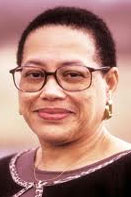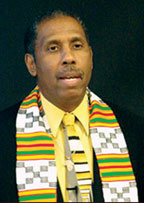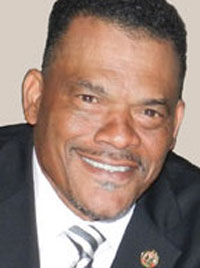
Financial shackles still in place
By Charlene Crowell, NNPA Columnist
As the annual, month-long Black History observance begins, now is a timely moment to reflect on the journey that previous generations of Blacks have trod in the continuing quest for total freedom and equality. From 1865’s Emancipation Proclamation, to 1954’s U.S. Supreme Court decision in Brown v. Board of Education, and 1965’s voting rights legislation, Black Americans have vigilantly fought for freedom.
Celebrations of our milestone moments convey our unique American history. By embracing our history, we teach our youth and remind older ones of significant strides achieved when we had none of the freedoms promised by our nation. Most of these achievements were fought and won when Black personal financial resources were rare, limited or nonexistent.
Blacks serving in the United States Colored Troops during the Civil War fought for the union as well as for themselves and the futures they envisioned for their families. Imagine the pride they must have felt when for the first time in their lives they held their own paychecks. According to the National Archives, beginning in 1864, banks such as South Carolina’s Military Savings Bank and Louisiana’s Free Labor Bank were created for these soldiers. For many, it was the first time they had ever been paid for their work.
Following the Civil War and regardless of locale, an important goal was to incorporate economic opportunity into the transition from slavery to freedom. And for a short time – from 1888 to 1934, 134 Black banks were established across the country. As Black banks grew, so did the number of Black customers and businesses. These were the institutions that sold and serviced loans for mortgages, built schools and churches, and invested in Black small businesses.
Unfortunately, the Great Depression of the 1930s destroyed banks serving customers of all races. Few institutions were able to survive panicked runs by depositors who demanded all of their money as they closed accounts.
It also began a serious distrust of banks and other lending institutions. For many, money in the mattress or hidden places in the home were thought to be safer options than financial institutions. The National Negro Bankers Association, founded in 1924, tried to provide support for its members. But by 1942, only 70 such institutions survived.
Fast forward to today when many consumers of color continue to distrust lending institutions. Despite federal laws, unequal treatment in the financial services sector has worsened age-old distrust and helped contribute to the growing racial wealth gap.
The number of Black-owned banks has shrunk to only 25 institutions as of last September, according to the Federal Deposit Insurance Corporation. This still-dwindling number of Black financial institutions is especially intriguing when contrasted with findings from the National Newspaper Publishers Association commissioned Neilsen Company report that projects Black purchasing power will reach $1.1 trillion this year.
With all of the growth in purchasing power, how is it then that so few Black people have wealth comparable to other groups?
One piece of this puzzle is the predatory lending that plagues our communities and has been documented by a series of research reports from the Center for Responsible Lending (CRL). From financing major purchases to small-dollar loans, predatory lending siphons off Black America’s money and wealth.
Subprime auto loans, now an $870 billion industry, actively seeks consumers with less than stellar credit, only to lock them into long-term loans that charge interest rates as high as 400 percent or more and for as long as 96 months.
High-cost, for-profit colleges heavily recruit students of color through misleading marketing practices. More often than not, for-profit students wind up dropping out of school and are left with no education and a lot of high-cost loans. The few who earn degrees quickly learn that their time and student debt investment did not bring respected academic credentials or training that would lead to gainful employment.
When household expenses exceed money available, borrowing a few hundred on a payday loan will result in fees that cost more than the principal borrowed. With each loan renewal, a difficult and deepening cycle of debt leaves borrowers even more financially challenged than ever.
Only time will tell how long it will take to recover the nearly $1 billion of wealth lost by Black and Latino mortgage borrowers as a result of foreclosures, short sales and devalued properties.
The chains of slavery are long gone; but they have been replaced by shackles of debt that deny our dreams and desired futures.
In 2015, let us learn from our history to take our financial patronage to businesses that offer fair and transparent value for their products. It is time to keep more of our money in our own pockets.





Be the first to comment